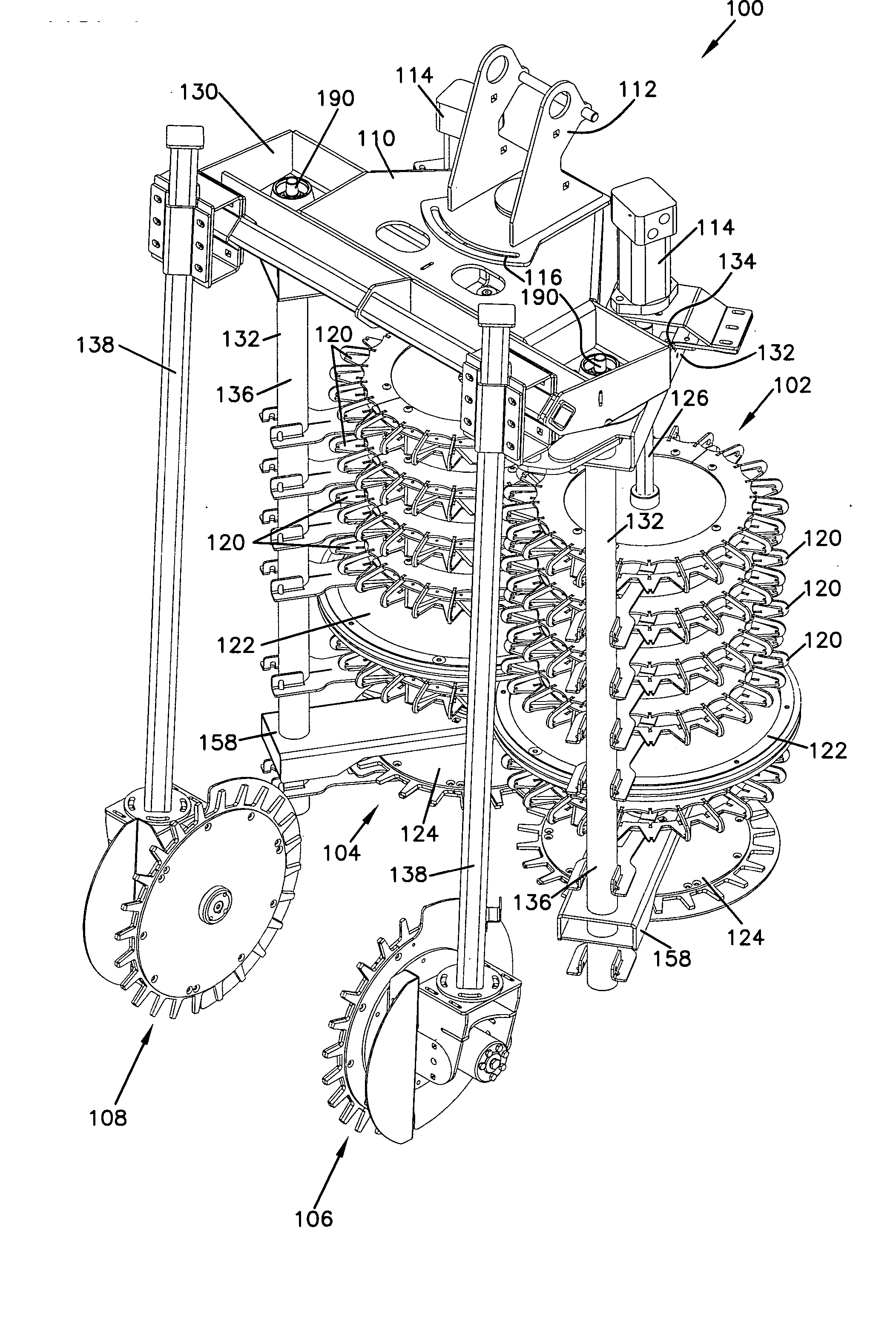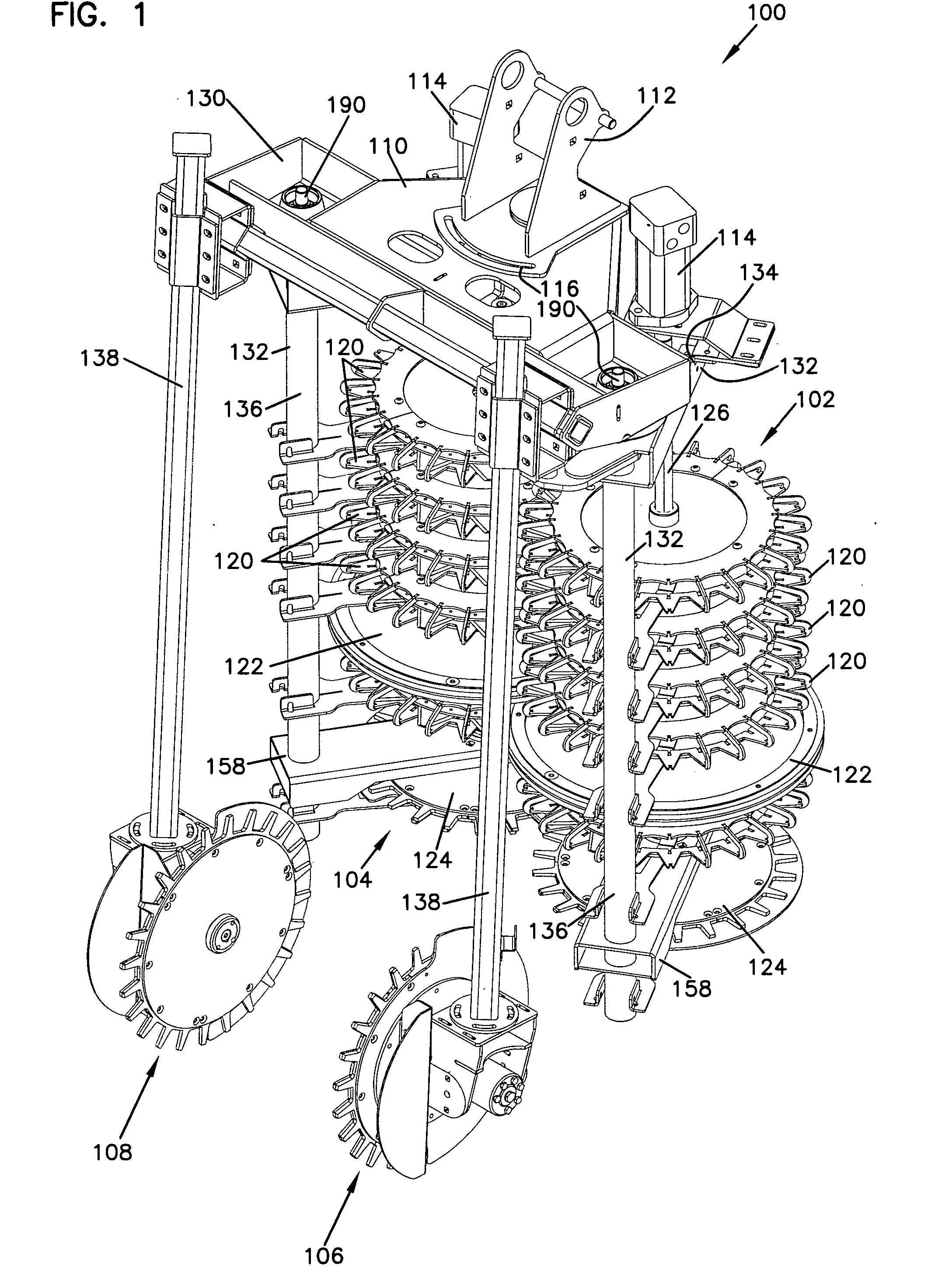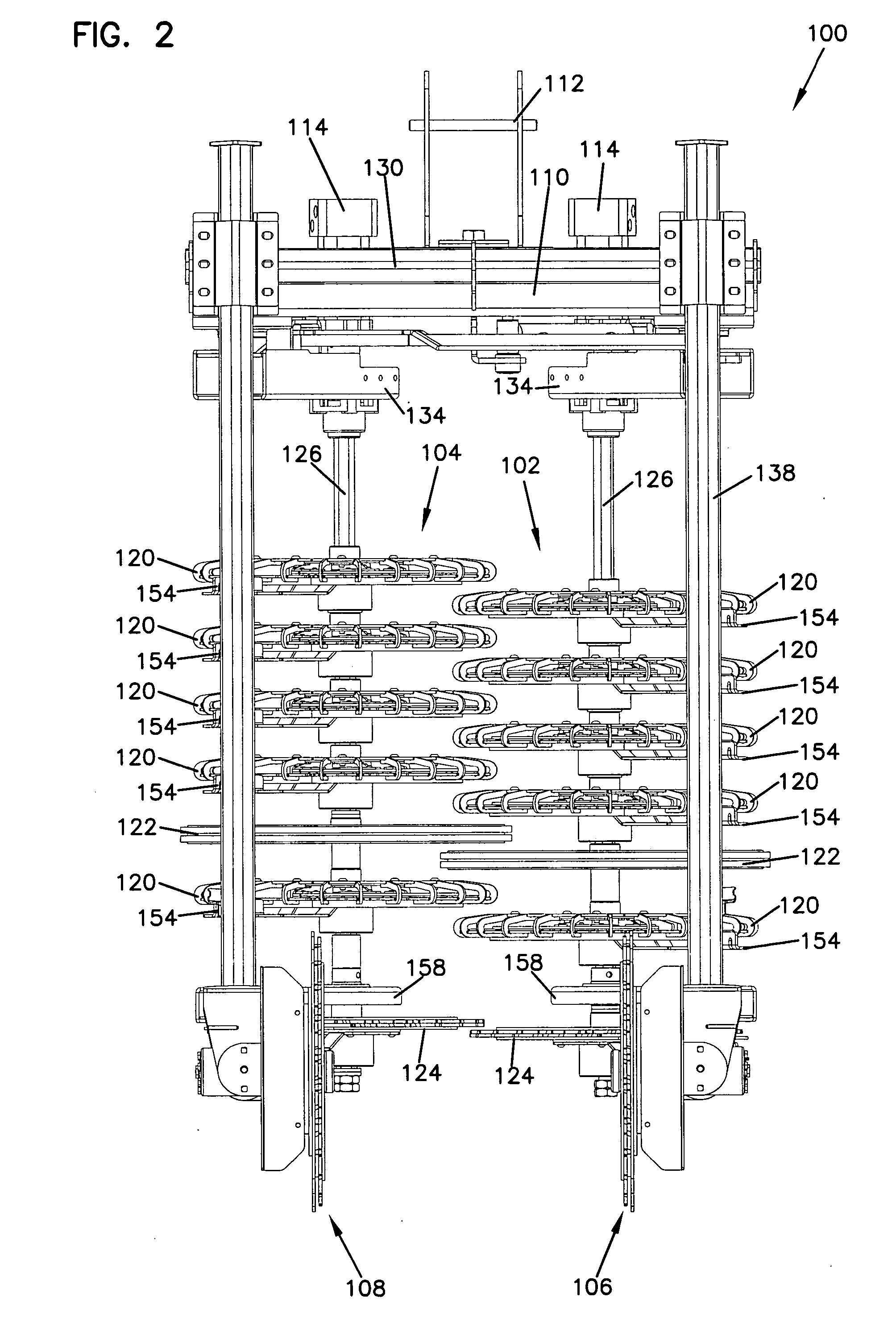Cutter apparatus
a cutting machine and cutting blade technology, applied in the field of plant cutting system, can solve the problems of large damage to plants and trellises, high maintenance cost, safety concerns, etc., and achieve the effect of reducing the chance of striking objects and small diameter
- Summary
- Abstract
- Description
- Claims
- Application Information
AI Technical Summary
Benefits of technology
Problems solved by technology
Method used
Image
Examples
first embodiment
[0043] Referring now to the drawings, and in particular to FIGS. 1-7, there is shown a cutting system, generally designated 100, configured for cutting away portions of plants, such as grapes trained on trellises in vineyards. The cutting system 100 includes first cutting assemblies 102 and 104. Although one of the cutting assemblies 102 and 104 may be shown or described hereinafter, the cutting assemblies 102 and 104 are substantially the same except for being configured for cutting on the left portion or right portion of the system 100. In a first embodiment, the cutting system 100 also includes second cutting assemblies 106 and 108, which are also substantially the same as one another, but are configured for the left or right sides of the cutting system 100.
[0044] The cutting system 100 is configured for being supported on a frame 110 from above on a hanging mount 112. The hanging mount 112 includes an adjustment bracket 116 to vary the system position as needed. The mount 112 ma...
second embodiment
[0057] Referring now to FIGS. 20-23, there is shown second cutter assemblies, generally designated 306 and 308. Each of the second cutting assemblies 306 and 308 is mounted on an upper frame 310 including a mounting bar 312. Each of the cutting assemblies includes a mounting bracket 314 that clamps to the mounting bar 312. The lateral position of each of the cutting assemblies 306 and 308 may be varied by changing the mounting location on the bar 312. A hydraulic motor 316 powers each of the cutting assemblies 306 and 308. A sickle bar 320 includes a vertical support 322 and a reciprocating sickle blade 324. The sickle bar assembly 320 reciprocates in a back and forth, up and down motion to provide a precise side cut and cooperates with the first cutting assemblies 102 and 104 to form a box shaped profile. It can be appreciated that the sickle bar assemblies 306 and 308 provide for variable spacing as the sickle bar assemblies 306 and 308 are moved on the mounting bar 312. Moreover,...
PUM
 Login to View More
Login to View More Abstract
Description
Claims
Application Information
 Login to View More
Login to View More - R&D
- Intellectual Property
- Life Sciences
- Materials
- Tech Scout
- Unparalleled Data Quality
- Higher Quality Content
- 60% Fewer Hallucinations
Browse by: Latest US Patents, China's latest patents, Technical Efficacy Thesaurus, Application Domain, Technology Topic, Popular Technical Reports.
© 2025 PatSnap. All rights reserved.Legal|Privacy policy|Modern Slavery Act Transparency Statement|Sitemap|About US| Contact US: help@patsnap.com



